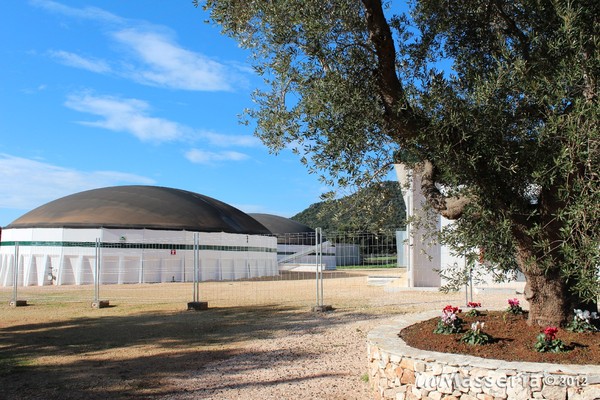
"Let's visit agroenergies": educational activities of the Enama Project
A rich programme of visits to biomass plants took place in October, as part of a wide project for the development of bioenergies carried out by the Italian authority for agricultural mechanization. Technicians, students and journalists visited 22 biomass plants situated in 8 regions
The Biomass Project, funded by the Ministry for Agriculture, Food and Forestry Policies, had the purpose to supply the agricultural sector with the technical, scientific and financial instruments required for the start-up of local agro-energy supply chains, in order to accomplish the goals set by the National Plan of Action (PAN) for renewable energies.
The Project was based among other things on the evaluation of the sector's potential and supply-chain contracts. Above all, it implied the building and monitoring of those biomass plants which were more innovative under the technical and structural perspectives. A tender procedure was carried out and finished in April 2010, in order to select the most innovative biomass plants.
The Project was aimed at building biomass plants and giving an example of good practice for all those entities which might be interested in them. The educational activities were completed by the monitoring of operating biomass plants by the Enama (the National Authority for Agricultural Mechanization) with the purpose to highlight strong and weak points of the different kinds of plants.
Thanks to the tender it was possible to finance 41 biomass plants, 36 of which were completed and put to the test, with a power of 23 MW and an energy production potential providing energy for 60,000 families.
The territorial distribution of the financed biomass plants (see figure 1) highlighted a predominance of north-eastern regions traditionally devoted to the use of agricultural biomass for electricity production. The building of a significant number of biomass plants also in the regions of south-central Italy is an encouraging sign.
Figure 1 – Regional distribution of financed biomass plants
□ Number of plants □ Power (MW)
Regions: Emilia Romagna, Veneto, Lombardia, Piemonte, Calabria, Puglia, Basilicata, Lazio, Tuscany.
The monitoring of the 21 operating plants that started to produce and put energy into the electricity network, highlighted that 60% of them is less than 600 kW, which is the size set by the new incentive regulations that have recently become fully operative. Furthermore, 80% of the raw materials used by these smaller biomass plants consist of by-products from agriculture and livestock farming (livestock farming wastewater, organic fertilizer, whey, olive residue and olive mill wastewater, loppings, vegetable waste materials and molasses).
These biomass plants are essentially the final step of a business' production cycle. They work side by side with the agricultural production without being in conflict with it, but on the contrary they increase the profits of a business. In addition, the energy production from these plants is free from unexpected price increase of commodities because all the raw materials are directly produced by the business itself.
Waste fumes and heat recovery systems were used for teleheating of businesses' areas (such as greenhouses, drying facilities, didactic farms and accomodation facilities). The best techniques for digested manure treatment and nitrates decomposition were developed for a more effective use of the biomass plants. These aspects allowed a further reduction of the environmental impact of agricultural activities on the local ecosystems.
Among the educational activities included in the project, Enama promoted the initiative “Let's visit agroenergies”, by virtue of which, in the week from 21 to 27 October it was possible to visit one of the operating biomass plants in order to get acquainted with its functioning and innovative characteristics. To this initiative took part 22 businesses situated in eight regions and 13 provinces with the participation of more than 100 visitors such as students from universities and technical schools, owners of agricultural businesses, technicians and journalists.








